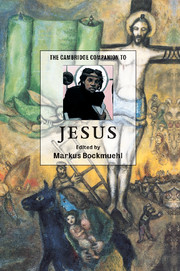1 - Context, family and formation
from Part I - The Jesus of history
Published online by Cambridge University Press: 28 May 2006
Summary
The so-called Third Quest of the historical Jesus has been marked by a variety of portraits. Jesus has been depicted as a rabbi, a sage, a prophet, a philosopher (perhaps even a Cynic), a holy man and a Messiah. What lies behind these discrepancies is a lack of consensus about context and differing assessments of source materials. The present chapter will treat three important areas of Jesus' background: (1) context, (2) family and (3) formation. Of special interest will be the extent of the Jewishness or Hellenisation of Galilee in Jesus' day and the question of how well trained in Scripture Jesus was.
CONTEXT
Galilee of the early first century ad was profoundly Jewish, though a thin veneer of Graeco-Roman culture was present. Agriculturally rich and strategically situated, Galilee was a region over which the Roman Empire maintained firm political control, alternately through client rulers (viz. the Herodian dynasty) or through the direct administration of Roman governors. Galilee measures some 69 km from north to south, and some 49 km from east to west. Although most of this territory ranges in elevation from 600 m to 1200 m above sea level, Lake Gennesaret (or popularly Sea of Galilee), some 21 km in length (north to south) and 5–11 km wide, is situated about 215 m below sea level. In the time of Jesus the lake supported (and still supports) a thriving fishing industry (cf. Strabo, Geog. 16.2; Pliny, Nat. Hist. 5.15; Josephus, J.W. 3.506–508; Mark 1.16–20 parr.; Luke 5.1–10; John 21.1–11).
- Type
- Chapter
- Information
- The Cambridge Companion to Jesus , pp. 11 - 24Publisher: Cambridge University PressPrint publication year: 2001
- 3
- Cited by

